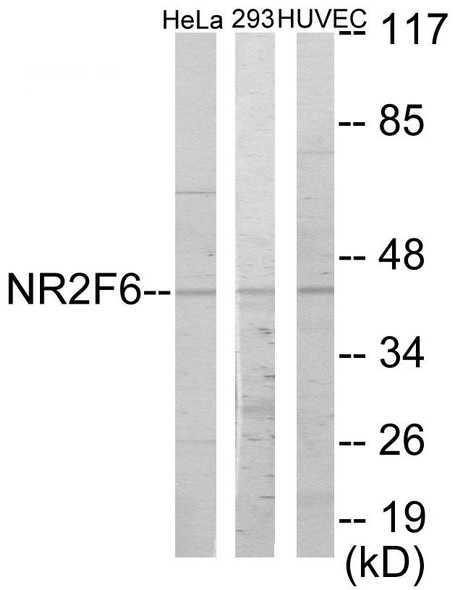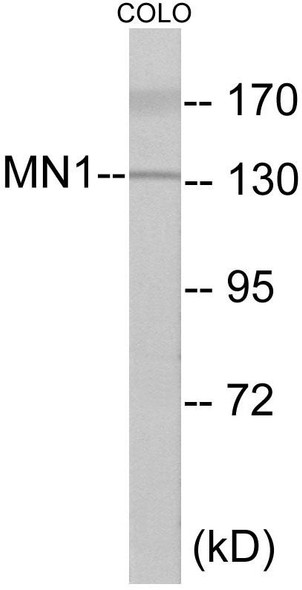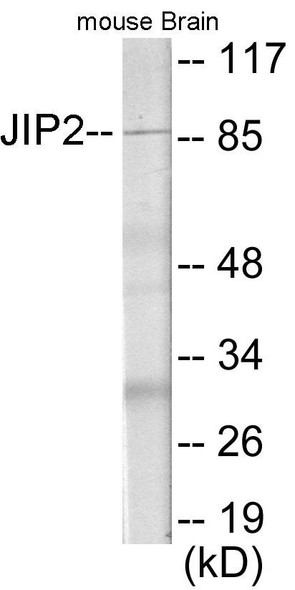Description
TNFSF11 Colorimetric Cell-Based ELISA
The Human TNFSF11 Colorimetric Cell-Based ELISA Kit is a cutting-edge tool for the accurate measurement of TNFSF11 (Tumor Necrosis Factor Ligand Superfamily Member 11) levels in cell lysates and tissue homogenates. This kit offers excellent sensitivity and specificity, allowing for precise and consistent results, making it an optimal choice for various research applications.TNFSF11, also known as RANKL (Receptor Activator of Nuclear Factor Kappa-B Ligand), is a critical regulator of bone metabolism, playing a pivotal role in cell differentiation, survival, and bone resorption.
Imbalances in TNFSF11 levels have been linked to bone disorders such as osteoporosis and osteopetrosis, as well as inflammatory conditions like rheumatoid arthritis.By accurately measuring TNFSF11 levels, researchers can gain valuable insights into bone-related diseases and potentially identify new therapeutic targets. The Human TNFSF11 Colorimetric Cell-Based ELISA Kit is a valuable tool for advancing research in bone biology and related fields.
| Product Name: | TNFSF11 Colorimetric Cell-Based ELISA |
| Product Code: | CBCAB00374 |
| ELISA Type: | Cell-Based |
| Target: | TNFSF11 |
| Reactivity: | Human, Mouse |
| Dynamic Range: | > 5000 Cells |
| Detection Method: | Colorimetric 450 nmStorage/Stability:4°C/6 Months |
| Format: | 96-Well Microplate |
The TNFSF11 Colorimetric Cell-Based ELISA Kit is a convenient, lysate-free, high throughput and sensitive assay kit that can detect TNFSF11 protein expression profile in cells. The kit can be used for measuring the relative amounts of TNFSF11 in cultured cells as well as screening for the effects that various treatments, inhibitors (ie siRNA or chemicals), or activators have on TNFSF11.
Qualitative determination of TNFSF11 concentration is achieved by an indirect ELISA format. In essence, TNFSF11 is captured by TNFSF11-specific primary antibodies while the HRP-conjugated secondary antibodies bind the Fc region of the primary antibody. Through this binding, the HRP enzyme conjugated to the secondary antibody can catalyze a colorimetric reaction upon substrate addition. Due to the qualitative nature of the Cell-Based ELISA, multiple normalization methods are needed:
| 1. | A monoclonal antibody specific for human GAPDH is included to serve as an internal positive control in normalizing the target absorbance values. |
| 2. | Following the colorimetric measurement of HRP activity via substrate addition, the Crystal Violet whole-cell staining method may be used to determine cell density. After staining, the results can be analysed by normalizing the absorbance values to cell amounts, by which the plating difference can be adjusted. |
| Database Information: | Gene ID: 8600, UniProt ID: O14788, OMIM: 259710/602642, Unigene: Hs.333791 |
| Gene Symbol: | TNFSF11 |
| Sub Type: | None |
| UniProt Protein Function: | TNFSF11: Cytokine that binds to TNFRSF11B/OPG and to TNFRSF11A/RANK. Osteoclast differentiation and activation factor. Augments the ability of dendritic cells to stimulate naive T-cell proliferation. May be an important regulator of interactions between T-cells and dendritic cells and may play a role in the regulation of the T-cell-dependent immune response. May also play an important role in enhanced bone-resorption in humoral hypercalcemia of malignancy. Homotrimer. Up-regulated by T-cell receptor stimulation. Highest in the peripheral lymph nodes, weak in spleen, peripheral blood Leukocytes, bone marrow, heart, placenta, skeletal muscle, stomach and thyroid. Belongs to the tumor necrosis factor family. 3 isoforms of the human protein are produced by alternative splicing. |
| UniProt Protein Details: | Protein type:Membrane protein, integral Chromosomal Location of Human Ortholog: 13q14 Cellular Component: extracellular space; integral to plasma membrane; cytoplasm; extracellular region Molecular Function:cytokine activity; tumor necrosis factor receptor superfamily binding; tumor necrosis factor receptor binding Biological Process: ossification; positive regulation of I-kappaB kinase/NF-kappaB cascade; positive regulation of osteoclast differentiation; cytokine and chemokine mediated signaling pathway; mammary gland epithelial cell proliferation; osteoclast differentiation; activation of JNK activity; positive regulation of corticotropin-releasing hormone secretion; positive regulation of homotypic cell-cell adhesion; activation of NF-kappaB transcription factor; calcium ion homeostasis; monocyte chemotaxis; positive regulation of protein kinase B signaling cascade; positive regulation of MAP kinase activity; organ morphogenesis; tumor necrosis factor-mediated signaling pathway; positive regulation of bone resorption; immune response; positive regulation of transcription from RNA polymerase II promoter; positive regulation of transcription factor activity; positive regulation of T cell activation; protein homooligomerization; bone resorption Disease: Osteopetrosis, Autosomal Recessive 2 |
| NCBI Summary: | This gene encodes a member of the tumor necrosis factor (TNF) cytokine family which is a ligand for osteoprotegerin and functions as a key factor for osteoclast differentiation and activation. This protein was shown to be a dentritic cell survival factor and is involved in the regulation of T cell-dependent immune response. T cell activation was reported to induce expression of this gene and lead to an increase of osteoclastogenesis and bone loss. This protein was shown to activate antiapoptotic kinase AKT/PKB through a signaling complex involving SRC kinase and tumor necrosis factor receptor-associated factor (TRAF) 6, which indicated this protein may have a role in the regulation of cell apoptosis. Targeted disruption of the related gene in mice led to severe osteopetrosis and a lack of osteoclasts. The deficient mice exhibited defects in early differentiation of T and B lymphocytes, and failed to form lobulo-alveolar mammary structures during pregnancy. Two alternatively spliced transcript variants have been found. [provided by RefSeq, Jul 2008] |
| UniProt Code: | O14788 |
| NCBI GenInfo Identifier: | 12643360 |
| NCBI Gene ID: | 8600 |
| NCBI Accession: | O14788.1 |
| UniProt Secondary Accession: | O14788,O14723, Q96Q17, Q9P2Q3, |
| UniProt Related Accession: | O14788 |
| Molecular Weight: | 30,523 Da |
| NCBI Full Name: | Tumor necrosis factor ligand superfamily member 11 |
| NCBI Synonym Full Names: | tumor necrosis factor (ligand) superfamily, member 11 |
| NCBI Official Symbol: | TNFSF11 |
| NCBI Official Synonym Symbols: | ODF; OPGL; sOdf; CD254; OPTB2; RANKL; TRANCE; hRANKL2 |
| NCBI Protein Information: | tumor necrosis factor ligand superfamily member 11; osteoprotegerin ligand; osteoclast differentiation factor; TNF-related activation-induced cytokine; receptor activator of nuclear factor kappa B ligand; receptor activator of nuclear factor kappa-B ligand |
| UniProt Protein Name: | Tumor necrosis factor ligand superfamily member 11 |
| UniProt Synonym Protein Names: | Osteoclast differentiation factor; ODF; Osteoprotegerin ligand; OPGL; Receptor activator of nuclear factor kappa-B ligand; RANKL; TNF-related activation-induced cytokine; TRANCE; CD_antigen: CD254Cleaved into the following 2 chains:Tumor necrosis factor ligand superfamily member 11, membrane form; Tumor necrosis factor ligand superfamily member 11, soluble form |
| UniProt Gene Name: | TNFSF11 |
| UniProt Entry Name: | TNF11_HUMAN |
| Component | Quantity |
| 96-Well Cell Culture Clear-Bottom Microplate | 2 plates |
| 10X TBS | 24 mL |
| Quenching Buffer | 24 mL |
| Blocking Buffer | 50 mL |
| 15X Wash Buffer | 50 mL |
| Primary Antibody Diluent | 12 mL |
| 100x Anti-Phospho Target Antibody | 60 µL |
| 100x Anti-Target Antibody | 60 µL |
| Anti-GAPDH Antibody | 60 µL |
| HRP-Conjugated Anti-Rabbit IgG Antibody | 12 mL |
| HRP-Conjugated Anti-Mouse IgG Antibody | 12 mL |
| SDS Solution | 12 mL |
| Stop Solution | 24 mL |
| Ready-to-Use Substrate | 12 mL |
| Crystal Violet Solution | 12 mL |
| Adhesive Plate Seals | 2 seals |
The following materials and/or equipment are NOT provided in this kit but are necessary to successfully conduct the experiment:
- Microplate reader able to measure absorbance at 450 nm and/or 595 nm for Crystal Violet Cell Staining (Optional)
- Micropipettes with capability of measuring volumes ranging from 1 µL to 1 ml
- 37% formaldehyde (Sigma Cat# F-8775) or formaldehyde from other sources
- Squirt bottle, manifold dispenser, multichannel pipette reservoir or automated microplate washer
- Graph paper or computer software capable of generating or displaying logarithmic functions
- Absorbent papers or vacuum aspirator
- Test tubes or microfuge tubes capable of storing ≥1 ml
- Poly-L-Lysine (Sigma Cat# P4832 for suspension cells)
- Orbital shaker (optional)
- Deionized or sterile water
*Note: Protocols are specific to each batch/lot. For the correct instructions please follow the protocol included in your kit.
| Step | Procedure |
| 1. | Seed 200 µL of 20,000 adherent cells in culture medium in each well of a 96-well plate. The plates included in the kit are sterile and treated for cell culture. For suspension cells and loosely attached cells, coat the plates with 100 µL of 10 µg/ml Poly-L-Lysine (not included) to each well of a 96-well plate for 30 minutes at 37°C prior to adding cells. |
| 2. | Incubate the cells for overnight at 37°C, 5% CO2. |
| 3. | Treat the cells as desired. |
| 4. | Remove the cell culture medium and rinse with 200 µL of 1x TBS, twice. |
| 5. | Fix the cells by incubating with 100 µL of Fixing Solution for 20 minutes at room temperature. The 4% formaldehyde is used for adherent cells and 8% formaldehyde is used for suspension cells and loosely attached cells. |
| 6. | Remove the Fixing Solution and wash the plate 3 times with 200 µL 1x Wash Buffer for five minutes each time with gentle shaking on the orbital shaker. The plate can be stored at 4°C for a week. |
| 7. | Add 100 µL of Quenching Buffer and incubate for 20 minutes at room temperature. |
| 8. | Wash the plate 3 times with 1x Wash Buffer for 5 minutes each time. |
| 9. | Add 200 µL of Blocking Buffer and incubate for 1 hour at room temperature. |
| 10. | Wash 3 times with 200 µL of 1x Wash Buffer for 5 minutes each time. |
| 11. | Add 50 µL of 1x primary antibodies (Anti-TNFSF11 Antibody and/or Anti-GAPDH Antibody) to the corresponding wells, cover with Parafilm and incubate for 16 hours (overnight) at 4°C. If the target expression is known to be high, incubate for 2 hours at room temperature. |
| 12. | Wash 3 times with 200 µL of 1x Wash Buffer for 5 minutes each time. |
| 13. | Add 50 µL of 1x secondary antibodies (HRP-Conjugated AntiRabbit IgG Antibody or HRP-Conjugated Anti-Mouse IgG Antibody) to corresponding wells and incubate for 1.5 hours at room temperature. |
| 14. | Wash 3 times with 200 µL of 1x Wash Buffer for 5 minutes each time. |
| 15. | Add 50 µL of Ready-to-Use Substrate to each well and incubate for 30 minutes at room temperature in the dark. |
| 16. | Add 50 µL of Stop Solution to each well and read OD at 450 nm immediately using the microplate reader. |
(Additional Crystal Violet staining may be performed if desired – details of this may be found in the kit technical manual.)






